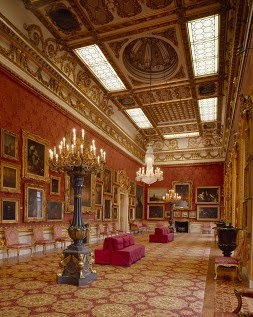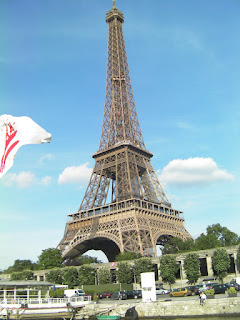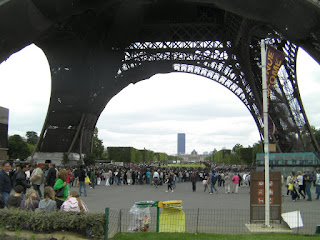Oh, joy – two weeks of all things Wellington coupled with chasing down and buying Artie-facts – bliss! Here’s an overview of what Vicky and I saw and did – individual posts on each to follow.
Of course, on this trip the Wellington Trail began at Apsley House. We were there within hours of my landing. And, yes, Vicky was telling the truth about the naked bicyclists (London World Naked Bike Ride). Honestly, what would Artie have thought?! Actually, Vicky and I were discussing it later that evening with a man at our local pub who told me that if I thought that Wellington would object to naked women riding past his house that I should have another think. It wasn’t, I told him, the women to whom I thought the Duke would object.
As we were getting into the cab headed to Apsley House, we were treated to our first Artie-dote. When I told the driver that our destination was Apsley House, he looked confused. “Number One London,” I added. “At the corner of Hyde Park and Park Lane.” “Oh,” replied the driver, “You mean the Wellington Museum.” No, actually, I meant Apsley House, but we got there just the same.

(By the way, try to find a photo of the London Naked Bike Ride that doesn’t have all the nasty bits on full view. It’s not easy)

But back to Apsley House and another most amusing Artie-dote. There I was in the Waterloo Gallery, the large picture gallery that was also used for the annual Waterloo Dinner, as well as for balls and concerts and such. Here, the Duke had installed an ingenious system whereby sliding mirrors hidden within the walls could be pulled out and across the windows at night, thereby reflecting candlelight throughout the room. Well, while we were there, one of the docents announced that it was time to pull the mirrors across the windows and that anyone who wished to could watch the operation. Closer I crept. You betcha. So did a couple standing nearby. Once the windows had been covered, the man said to his wife, “You know, those mirrors aren’t really made of glass at all. They’re made of steel.” “Really?” his wife asked, stepping in close in order to examine the mirrors. “Yes,” said the husband, “They’re made of steel and that’s why they called Wellington the Iron Duke.” I know, I know . . . . hysterical, right?
Continuing down the Wellington Trail, Vicky and I also visited Horse Guards, where Wellington’s office still contains his desk. Inquiries at the gift shop resulted in my being told that it’s not typically open to the public, hence I’ll have to write in advance for permission to view it before my next trip over. Still, it was nice to walk the cobbles on which Wellington’s boots had once trod. The view of the men in uniform wasn’t too shabby, either.
The two windows above the three arches are Wellington’s office.
Vicky and I also visited the National Army Museum, which has wonderful Napoleonic/Artie/Waterloo displays – a full report on the Museum will follow. For now, you should know that one of the exhibits included the saw used to amputate Henry Paget/Lord Uxbridge/the Marquess of Angelesey’s leg (same guy, lot’s of titles), as well as the bloodied glove worn by the surgeon during the operation. (I don’t tell you this for it’s high gruesome content – it ties in to what’s coming up in Part 2)
Vicky and I next went to the Victoria and Albert’s Art in Love Exhibition at the Queen’s Gallery – again, a full account on that to come, as well. One of the first paintings hanging in the very first room you entered was the one below, by Winterhalter:
And then we went to Windsor to meet and the spend the day with Hester Davenport (oh, boy – wait till you hear this story!) We visited the Castle, where this picture hangs:
In between all of these Artie sightings, Vicky and I had gone to Ce
cil Court one morning. In the window of an antique shop called
Mark Sullivan Antiques (at left), I spied a Staffordshire figurine of the Duke of Wellington (below). About two feet high. Hand painted. Staffordshire. . . . I gazed upon it with my nose pressed to the shop window. I pointed it out to Vicky and then we both gazed at it with our noses pressed to the shop window.
I knew at that moment that it was destined to be mine. The sign on the shop door said they opened at 10 a.m. It
was 10 a.m.

Vicky finally pulled me away from the window and we went next door to
Storey’s, the print seller, and spent at least an hour looking at all of the cartoons and Napoleonic era prints until the owner took us downstairs to the room where they kept the Artie-facts. Here, Vicky found and bought a print of a scene of Viermo and I made my first Wellington purchase this trip, a hand colored portrait like the one below (mine is out being framed, so I can’t show it to you yet) By the time we’d left, the antique shop next door was still closed. Rats.
So Vicky and I toddled our way over to Covent Garden and
Grosvenor Prints, where Vicky asked them to pull their file of fashion prints and I asked for the Artie-facts folder. We spent a good hour and a half going through our respective folios. Alas, I found nothing that I didn’t already have or that I coveted to distraction. . . . Until I came across a dinner invitation issued by the the Duke from Apsley House to
Lord and Lady Cottenham. The invitation states that since the dinner was to be held on the day set aside for the observance of Her Majesty’s birthday, it might be convenient for Lord and Lady Cottenham to arrive dressed. (Unless, one supposes, they were thinking to participate in the Naked Bike Ride conveniently held on the Duke’s dooorstep). Yes, of course, I purchased the invitation and Vicky purchased some really lovely fashion prints.
One of the stops on our tour during Open Garden Week in London (again, more on that later) was the garden at Wellington Square. Vicky and I are now certain that this should be the location of our UK base. Not only are the houses and square gorgeous, but the address is perfect.



One of the Wellington sightings was made by Vicky, who went on her own to the Wallace Collection, a short walk from our London base. There, Vicky viewed and photographed a miniature of Wellington done by
Jean-Baptiste Isabey. The Collection’s website offers the following background:
After Napoleon’s abdication in 1814 he painted the Emperor’s former enemies, including Prince August of Prussia (miniature also displayed in this case) and the Duke of Wellington (1769-1852). The following year the Duke was to be the victor at the Battle of Waterloo, Napoleon’s final defeat after his return to France from exile on the island of Elba. The first meeting between Isabey and Wellington took place in Paris, but there were further sittings in Vienna when Wellington was one of the representatives at the congress which determined the future political composition of Europe. According to Isabey himself, when Wellington first came to his studio in Paris, he ‘treated me in a manner so unceremonious and British that I was obliged to refuse flatly the honour of painting his august features. When he realised that I had found him rude, he came again accompanied by the Duchess de Santa Cruz, and I consented to paint his portrait after all.’
The Duke, who during his long life was to sit for countless portraits, was often a generous patron but was also notorious for his often brusque way with artists. By adopting a low viewpoint Isabey has effectively conveyed the hauteur of his sitter. The Wallace Collection’s version of the original (now lost) miniature is dated 1818 and shows Wellington wearing some of his many decorations: the ribbon and jewel of the Golden Fleece, the Peninsular Gold Cross and the sta
r and badge of the Order of the Tower and Sword of Portugal. The splendid frame is decorated round the edge with the chain of the Order of the Garter and is surmounted by a trophy comprising a sword, a baton, two flags and a ducal coronet on a cushion; at the bottom is the letter W on a banner.
The miniature was bought by the 4th Marquess of Hertford, father of Sir Richard Wallace, at auction in Paris in 1852. Lord Hertford collected objects with Napoleonic associations, as many of the paintings and miniatures in this gallery demonstrate, but he was also deeply interested in the Duke of Wellington. His friend Colonel Gurwood was the Duke’s secretary. Both men are shown in a painting by Andrew Morton on display in the Front Hall of the Wallace Collection.
A photo of this painting taken by Vicky appears below.
Part Two of On The Wellington Trail coming soon . . . . . .



















